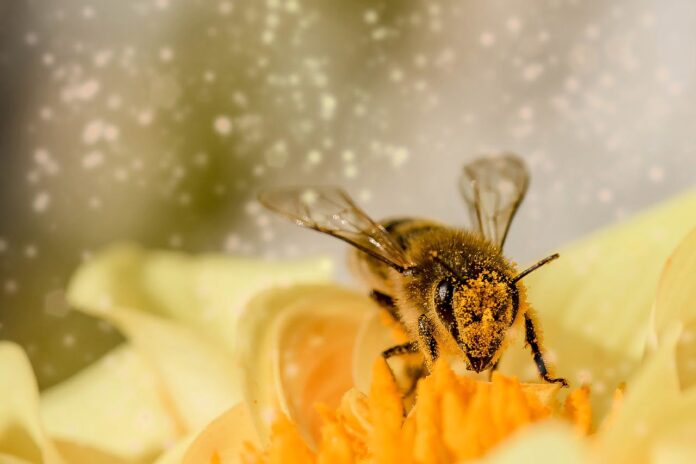In the intricate web of ecological interactions, few creatures play a role as vital as that of pollinators. Among them, bees are heralded for their indispensable contributions to the propagation of countless plant species, including many crops essential for human consumption. However, the global bee populations have witnessed a worrisome decline, prompting concerns about the future of agriculture and natural ecosystems.
The Decline of Bee Populations
The alarming decrease in bee numbers has become a global phenomenon, with reports of colony collapses and dwindling wild bee populations emerging from various parts of the world. This decline is particularly concerning given that bees are responsible for pollinating approximately one-sixth of flowering plant species worldwide and around 400 different types of agricultural plants. The loss of bees has direct implications for biodiversity, food security, and the overall health of ecosystems, as many plants rely on bees for reproduction.
One of the main contributors to the decline is the phenomenon known as Colony Collapse Disorder (CCD), where worker bees abandon their hive, leaving behind the queen and immature bees. While the exact cause of CCD is not fully understood, it is believed to be a combination of factors such as diseases, parasites, and stress from transportation of hives across long distances for pollination services. Additionally, climate change is affecting bees by disrupting their seasonal behaviors and the availability of food resources, further contributing to population declines.
Another significant issue is the loss of habitat due to agricultural expansion, urbanization, and deforestation, which reduces the diversity and availability of flowering plants that bees depend on for nectar and pollen. As bees face dwindling food sources and suitable nesting sites, their ability to thrive and reproduce is severely compromised, exacerbating the downward trend in their populations.
Threats to Pollinator Survival
The survival of bees is threatened by an array of factors that are often interrelated and complex. Pesticides, particularly neonicotinoids, have been linked to bee mortality and sublethal effects that impair bees’ foraging abilities, navigation, and reproductive success. Despite some regulations and restrictions, the widespread use of these chemicals in agriculture continues to pose a significant threat to bee populations.
Diseases and parasites, such as the Varroa mite, also play a critical role in the decline of bees. These parasites attach to bees and feed on their bodily fluids, weakening the bees and transmitting viruses that can devastate entire colonies. The spread of these pathogens is exacerbated by global trade and the movement of bees for commercial pollination, leading to increased exposure and distribution of diseases among bee populations.
Climate change is altering the distribution of plants and the timing of flowering, which can create mismatches between the availability of floral resources and the periods when bees need them. Extreme weather events, such as droughts and heatwaves, can decimate bee habitats and food sources, leaving bees vulnerable to starvation and population crashes. Climate change also affects the range of bees, sometimes forcing them into competition with other species or into areas where they are less adapted to survive.
Conservation Efforts for Bees
In response to the plight of bees, numerous conservation efforts have been initiated by governments, non-governmental organizations, and concerned citizens alike. One approach has been the development of bee-friendly practices in agriculture, such as planting pollinator habitats, reducing pesticide use, and adopting integrated pest management strategies that are less harmful to bees. These practices aim to create a more sustainable environment for bees to forage and thrive.
Public awareness campaigns have also played a significant role in bee conservation, educating people about the importance of bees and how they can help protect these insects. Initiatives like community gardening, urban beekeeping, and the installation of bee hotels provide food and shelter for bees, while also engaging local communities in conservation efforts. These projects not only support bee populations but also serve to connect people with nature and foster a sense of stewardship for the environment.
Protecting wild bee species is another crucial aspect of conservation, as these bees are often more effective pollinators than their domesticated counterparts. Preserving and restoring natural habitats, banning harmful pesticides, and safeguarding against the introduction of diseases and invasive species are all strategies that can help maintain healthy and diverse bee populations. International collaboration is essential, as bees know no borders, and their preservation requires concerted efforts across geographic and political boundaries.
The decline of bees is a complex issue that reflects broader environmental challenges. As pollinators, bees are irreplaceable cogs in the machinery of biodiversity and human food production. The threats they face underscore the need for comprehensive and sustained conservation efforts tailored to their unique needs. It is imperative to recognize the plight of bees and take decisive action to ensure their survival. Through a combination of policy changes, sustainable practices, and community engagement, there is hope for reversing the decline of bee populations and safeguarding the essential services they provide to ecosystems and humanity.
